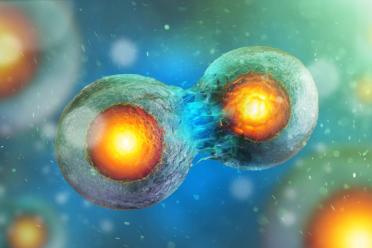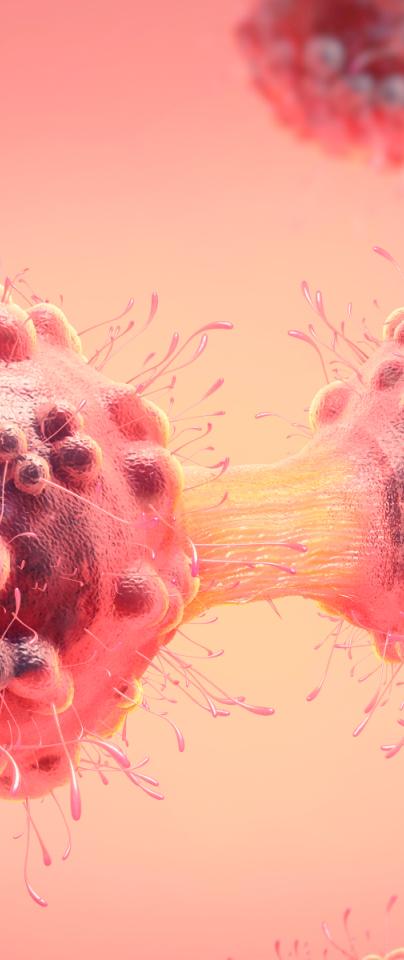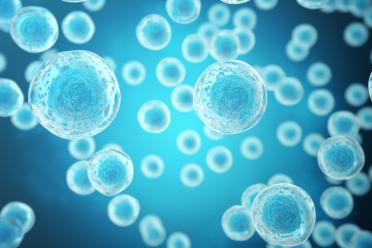The human mosaic
How are single cell genomics technologies allowing us to explore the human mosaic in unprecedented detail?
Over your lifetime you have expanded from a single cell into a coordinated mosaic of over 30,000,000,000,000 cells – one hundred times the number of stars in the Milky Way. How are new genomics technologies allowing us to explore this extraordinary mosaic in unprecedented detail?
Your cells – like tiles in a mosaic – are diverse in size, shape, function and identity, but work collectively to sustain and maintain life.
During development the human body expands from a single cell into an unimaginably complex and coordinated assembly of over 30,000,000,000,000 cells – 100 times the number of stars in the Milky Way. Over 50 billion of these cells are replaced every day, such that over the course of an 80-year human lifetime, over 1 quadrillion (a million billion) cells may be generated from the initial zygote that results from the fertilisation of an egg cell by a sperm cell.
With each of the cell divisions required to generate these numbers, the genome is replicated, and with replication, there can be errors. Think of the genome in the zygote as an original document which is photocopied with the first cell division, then copies of this copy are made and copied again until trillions of copies are made.
Over time, differences between the original document and its progeny will accumulate, and in some cases the quality of the information contained in the document will be diminished - a word might get blurred beyond recognition, or a phrase may fade until redacted. A smudge made during the first or second copy will show up in the vast majority of subsequent copies, errors made later will show up in just a small percentage of copies.
Scientists are still figuring out the rate at which these errors occur in the 3.2 billion DNA bases in the human genome; estimates range from a few to several hundred mutated bases arising per cell division. This is the baseline, without external factors - such as smoking or exposure to other carcinogens – playing a part.


During development the human body expands from a single cell into an unimaginably complex and coordinated assembly of over 30,000,000,000,000 cells – 100 times the number of stars in the Milky Way.

While the chance of mutation per cell division might be very low under normal circumstances, taking the number of cell divisions required to “make” a human into account suggests over 1 x 1016 mutation events could happen during a normal human lifespan if only 2 mutations are acquired per cell division. Those which occur during cell divisions early in development (an estimated 300, according to studies of monozygotic twins) will be prevalent in all tissues throughout the body. Others will be confined to specific tissues, or even sub-regions of specific tissues. Many will be unique to individual cells, or very small numbers of cells.
With normal development, the body becomes a mosaic of subtly different genomes.
Most of these mutations will have no effect on the running of the genome, which has a significant capacity to absorb mutations; many will fall in regions with no function and those falling in genes may have no, or only minor effects on cellular function. The vast majority of cells which have acquired mutations will simply die as part of daily turnover before the mutation can become a fixed part of the organism.
However, some of these acquired mutations have severe consequences. The extreme – but sadly most familiar – manifestation of these acquired genomic mutations is in cancer. Here, a single renegade cell acquires mutations conferring a replicative advantage, allowing it – and its progeny – to divide and mutate faster at the expense of the needs of its neighbouring cells, and ultimately, the whole organism.


Some of these acquired mutations have severe consequences. The extreme – but sadly most familiar – manifestation of these acquired genomic mutations is in cancer.

New genomics techniques – collectively termed single cell genomics – are enabling researchers to dissect this heterogeneity, one cell at a time. Previously, genome sequencing has been performed on DNA from large samples, containing mixtures of millions, even billions of cells all blended together. In such an experiment, the cell-to-cell genomic variation is completely lost, and only an ‘average’ genome is observed.
With single cell genomics, it is possible to sequence the DNA of individual cells, and in doing so, capture the genomic variation within the organism. The implications of this technology, in terms of understanding how the genome changes over the human lifespan – and during the origins and evolution of cancer, are profound.
You can hear EI's Technical Development Group Leader, Dr Iain Macaulay, explore ‘the human mosaic’ in detail at the Norwich Science Festival, where he’ll be taking to the stage on Wednesday 23 October.


With single cell genomics, it is possible to sequence the DNA of individual cells, and in doing so, capture the genomic variation within the organism.
